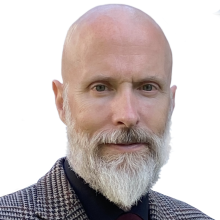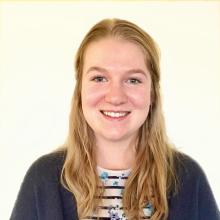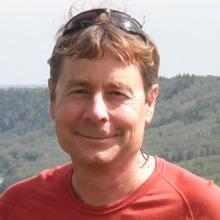Case Study One - Hanford
The Use of Geophysics to Support Site Characterization,
Remedy Implementation, and Monitor Performance at the Hanford Site
Tuesday, November 14, 2023 | 9:00 a.m. to 12:00 p.m. (Pacific Time)
► watch the recording:

At complex nuclear sites like the Hanford Site, there are significant technical challenges for site characterization and remedy implementation. Some attributes of complex sites typically include large-scale and co-mingled contamination, significant subsurface heterogeneity, heterogeneous contaminant distribution, complex contaminant behavior, and wide-spread continuing sources. Traditional approaches to characterization and monitoring through boreholes typically yield sparsely distributed information which, at complex sites, may be insufficient to support the development of robust conceptual site models and detailed performance assessments. Therefore, there is a need for cost effective and innovative technologies to support site characterization, remedy implementation and performance monitoring.
This case study focuses on the use geophysical technologies to supplement borehole information on the Hanford Site for characterization and monitoring. Geophysical methods are typically cost effective, can provide spatially distributed information on subsurface characteristics, and can be used on the surface or in boreholes in 2D and 3D configurations to provide more detailed analysis between boreholes. The Hanford Site has a decades-long history of using geophysical methods to support a variety of site objectives including environmental management, with more innovative and cutting-edge applications being developed and implemented in recent years.
The goals of this case study are to (1) introduce and share novel ways that geophysical technologies are being used at the Hanford Site to supplement borehole information, and (2) demonstrate technology developments that could benefit characterization of other complex remediation sites around the globe.
Agenda
Timeline (Pacific Time)
|
Presentation Title
|
Presenter
|
9:00–9:15 a.m.
|
Historical uses of geophysics methods at the Hanford Site |
Doug Hildebrand |
9:20–9:40 a.m.
|
Utilizing geophysical methods in remedial decision making at the Hanford Site |
Sarah Springer |
9:45–10:00 a.m.
|
Geophysical method selections, investigations, and translation for characterization and monitoring goals |
Fred Day-Lewis |
10:05–10:20 a.m.
|
Stratigraphic structure identification using electrical resistivity tomography (ERT) and seismic methods | Judy Robinson |
|
10:25–10:40 a.m. |
BREAK |
|
10:40–10:55 a.m.
|
Source area characterization at the BC Cribs and Trenches site |
Tim Johnson |
11:00–11:15 a.m.
|
Remedy implementation monitoring using ERT at the 100K Soil Flushing site |
Tim Johnson |
11:20–11:40 a.m.
|
Long-term monitoring of low moisture and flux conditions in the vadose zone using multiple geophysical methods |
Dory Linneman |
11:45 a.m.–12:00 p.m.
|
Predicting remediation technology longevity using spectral induced polarization |
Jim Szecsody |
Biographies
Moderators
Speakers
 DOE-RL, Retired |
Doug Hildebrand is a retired physical scientist from the Department of Energy, Richland Operations Office's (DOE-RL’s) Soil and Groundwater division and is a current argonne associate of Value Added Solutions, Inc. He has worked at the Hanford Site for over 33 years. Hildebrand was the project lead and technical advisor for numerous high-impact operable unit evaluations and analyses on the Hanford Site. Hildebrand has been instrumental in encouraging borehole and surface geophysical applications on the Hanford Site and has been involved in numerous geophysical investigations at Hanford facilities during his career. These include using seismic methods to image the top of basalt and fracture flow top mapping, electromagnetic methods for Hanford and Ringold Formation mapping and fracture flow top and groundwater. He also facilitated the use of electrical resistivity at the tank farms for leak detection and contamination mapping at cribs, ponds, and ditches. Hildebrand earned a BS in geology from Utah State University. _________________________________________________ |
 RSI Entech, UCOR |
Sarah Springer is a geoscientist with nearly 20 years of experience in the characterization and application of subsurface modeling techniques to projects in the Energy and Environmental sectors. She is a senior scientist with RSI Entech, acting as the Comprehensive Environmental Response, Compensation, and Liability Act integration manager at United Cleanup Oak Ridge (UCOR) in Tennessee. Prior to this, she spent seven years at the Hanford Site managing soil and groundwater cleanup projects. She has a BS in environmental and engineering geology from Western Washington University and an MS in structural geology from Utah State University. _________________________________________________ |
 PNNL |
Fred Day-Lewis joined PNNL in 2021 as a chief geophysicist and laboratory fellow. Prior to starting at PNNL, he worked for the U.S. Geological Survey for 18 years. Day-Lewis has worked on diverse applied research projects related to subsurface characterization and monitoring, groundwater remediation, and groundwater or surface-water exchange. He currently serves as an associate editor for the journal Groundwater. Day-Lewis is a past president of the American Geophysical Union Near Surface Geophysics section. He was elected fellow of the Geological Society of America in 2015. He is a 2023 recipient of the Harold Mooney Award from the Society of Exploration Geophysicists for contributions to the near-surface geophysics community. He received his PhD from Stanford University. _________________________________________________ |
 |
Judy Robinson is a computational scientist with field and numerical modeling experience in geophysical methods and specializes in electrical resistivity imaging. Since joining PNNL in 2018, her work has focused primarily on joint inversion using flow and transport models with electrical resistivity imaging to determine the feasibility of field electrical imaging. She has also led efforts for kilometer-scale geophysical imaging on the Hanford Site to better define stratigraphic structure. Robinson has expertise in analyzing complex resistivity data and is working towards interpreting mechanisms responsible for soil organic matter complexation. She received a BS in civil engineering from the New Jersey Institute of Technology, an MS in environmental engineering from Johns Hopkins University, and a PhD in environmental sciences specializing in near-surface geophysics from Rutgers University-Newark. |
 |
Tim Johnson is a computational geophysicist at PNNL. He is internationally recognized for his technical contributions to subsurface geophysical imaging and process monitoring. His primary research is focused on characterizing and monitoring subsurface properties and processes using autonomous geophysical measurements, with an emphasis on electrical methods. Johnson is the original developer of the award-winning E4D software, parallel electrical resistivity tomography and spectral induced polarization inversion code designed specifically for 4D subsurface imaging, and awardee of the 2022 Society of Exploration Geophysics Frank Frischknecht Leadership Award. _________________________________________________ |
 |
Dory Linneman is a geophysicist at PNNL with research interests in applications of geophysics to issues in hydrogeology, environmental management, and national security. Her background is focused in the acquisition and analysis of active-source seismic data, but since joining PNNL in 2019 her work spans a variety of geophysical capabilities, especially in the application of environmental monitoring and remediation technologies at the Hanford Site. Her project work includes everything from executing data collection campaigns in the field to designing laboratory experiments and building new geophysical instruments. Dory has a Bachelor's degree in Physics from Scripps College and a Master's degree in Environmental Geology from the University of Kansas. _________________________________________________ |
 |
Jim Szecsody’s research focus is on the development of subsurface remediation technologies and the characterization of transport of metals or radionuclides (strontium, uranium, cesium, cobalt, technetium, chromium) and organics. This includes laboratory research and model simulation at the batch scale to identify and parameterize reactions and processes, and 1-D flow experiments to address process coupling with advection, 2-D laboratory experiments (1 m to 7 m) to address the importance of spatial heterogeneities and field experiments to upscale engineered geochemical remediation methods. Helped develop technologies deployed at Hanford 100-D (In Situ Redox Manipulation), 100-N (Ca-citrate-PO4), 300 area (polyPO4) and off site. Current research involves laboratory scale evaluation of multiple solid, liquid, and gas-phase remediation technologies and measurement of reactive barrier longevity using spectral-induced polarization. |
Historic Hanford Site Tour
Nuclear reactors at Hanford (now the Hanford Site) produced plutonium for the Manhattan Project to fuel the first atomic test, and the Fat Man atomic bomb dropped on Nagasaki, Japan, on August 9, 1945. At the start of the Manhattan Project work, about 1,500 residents in the agricultural towns of Hanford and White Bluffs were displaced from their homesteads and orchards, along with Native American Tribes, as the government transformed the Eastern Washington desert as part of the secret war plan.
This historic Hanford Site tour will be offered through the Manhattan Project National Historical Park administered by the U.S. Department of Energy and the National Park Service. Join us to learn more about the people, events, science, and engineering of the Manhattan Project and the history of the area prior to the start of activities at Hanford in 1943.
This Monday afternoon tour is included in your registration fee but requires separate registration to reserve your space on the bus. The tour will be capped at 45 people, but with enough interest, a morning tour may be added.
